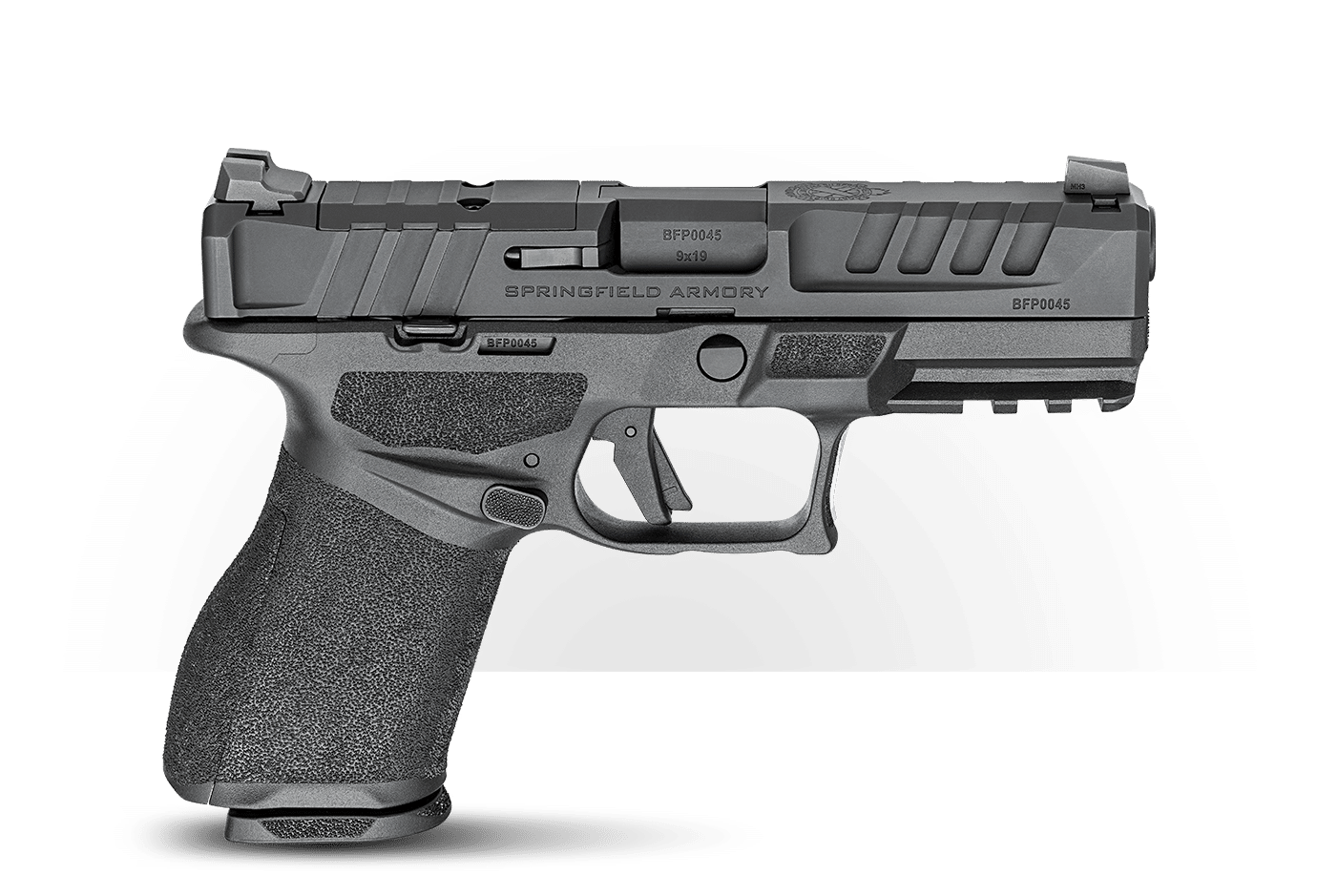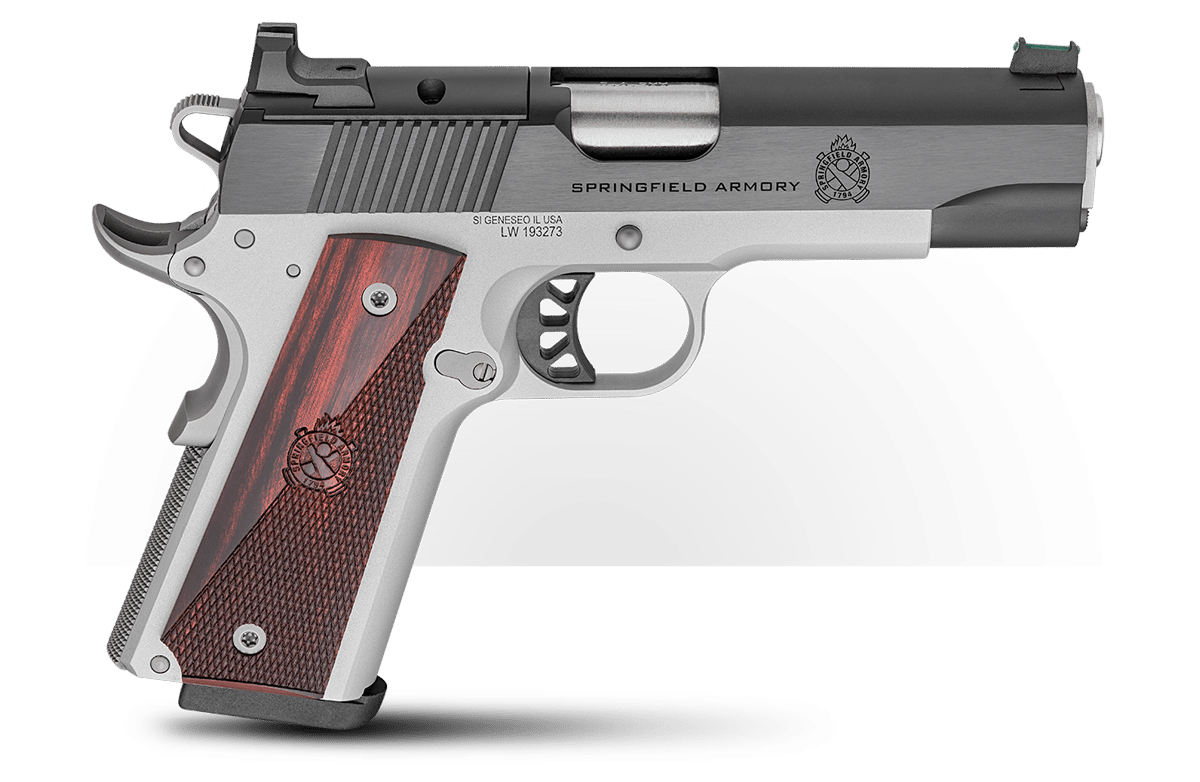Editor’s Note: This article is for discussion purposes. Please seek guidance from a professional firearms trainer for your self-defense needs.
A cornerstone of the Modern Technique of the Pistol remains the Combat Triad. Just about all serious students of defensive pistolcraft are familiar with the concepts of Col. Jeff Cooper, who was indeed a true innovator. In fact, many of his ideas have stood the test of time.
In case you are familiar with it, the Combat Triad is a balance of critical components including mental conditioning, practical marksmanship and gun handling. All are equally important in armed, interpersonal conflict.
Certainly, no one would dismiss mental conditioning as a vital component of crisis management. No matter how good your skills are, you are at a serious deficit if you have not given some serious thought to what you might do if confronted with lethal danger. Be aware of what is going on around you, be willing to use extreme violence if necessary in order to prevail, and have a plan. Needless to say, the ability to place fast, decisive hits on an adversary is readily apparent to all who take up the handgun for personal defense.
Where some users may come up short is in the area of gun handling, if their command of basic operational skills is not up to the task. Basic gun handling includes drawing from the holster, working from ready positions, stoppage reduction and reloading. Quite simply, if you cannot get into action or quickly get your gun back into the fight, the deck is stacked against you no matter how well you can shoot.

While I don’t consider myself omniscient in all training matters, I have been involved in firearms instruction for many years, primarily with law enforcement officers as well as with some classes of armed citizens. Cops do indeed qualify with their firearms once or twice per year, and many states require responsible citizens to pass some sort of basic shooting test before being issued a carry permit.
Of course, many law enforcement agencies, cops, and motivated armed citizens see the shortcomings of minimum standards and train to a higher level. If you are serious about personal defense, shouldn’t you? A command of basic operational skills is an absolute requisite in the formula for success.
Reload Reality
History illustrates that the absolute need to reload during a gunfight is extremely rare. I am, however, familiar with several events involving law enforcement officers, including a couple where an officer was into a third magazine.
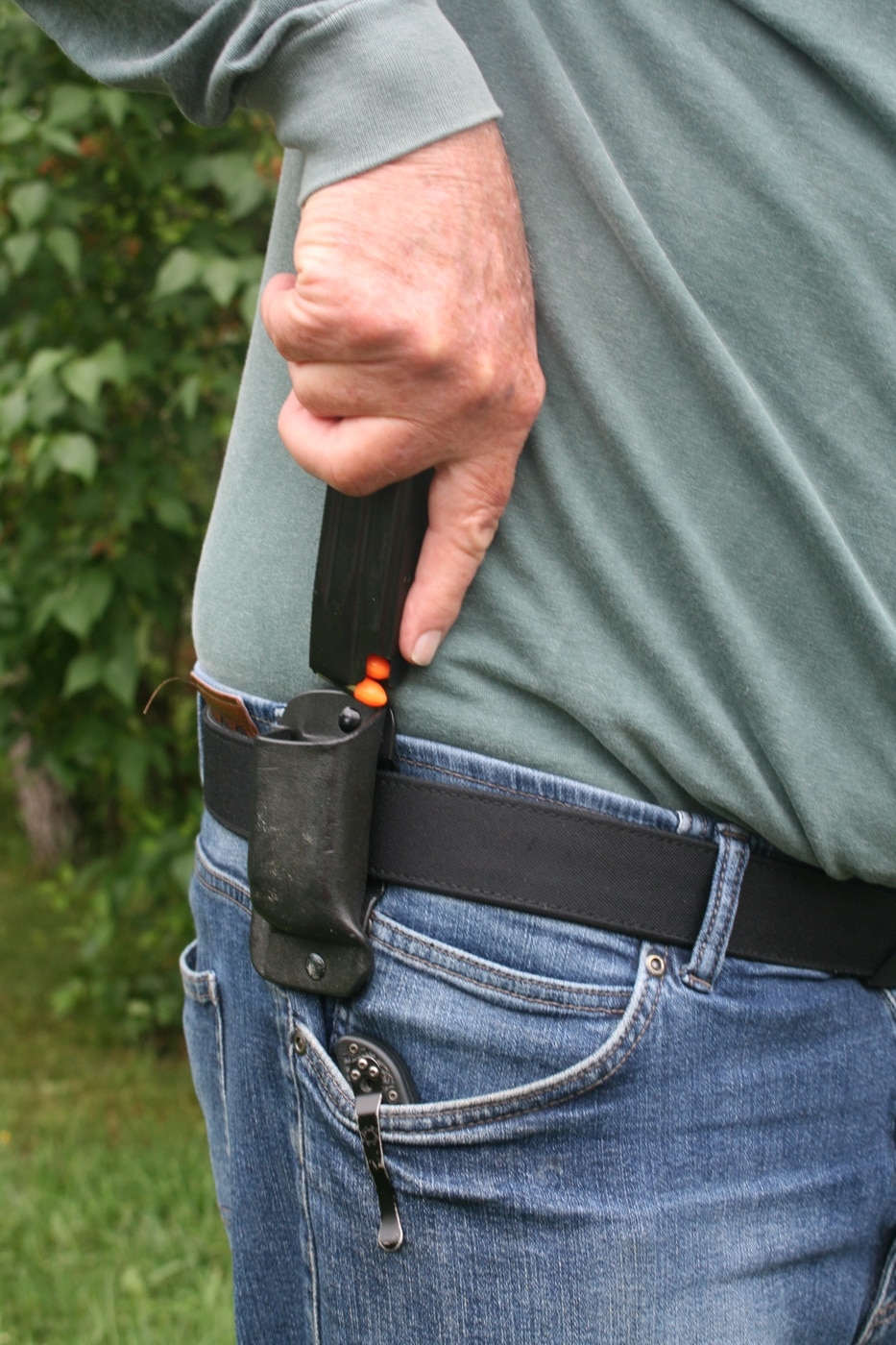
However, the ability to quickly reload your handgun is still important, even for the armed citizen. Assuming you got into something with your 11-shot Hellcat pistol and stopped the threat with five rounds, do you really want to stand around and wait for the police with a half-loaded gun (but be sure to put that gun down and identify yourself when they arrive!)? What if your attacker has associates you did not see, and ones who might not be especially pleased with your handiwork. The ability to quickly top off your pistol as you await the arrival of the cavalry can be a sound move.
Regardless of the capacity of your handgun, I recommend that you have at least one reload on your person. As a working law enforcement officer, I carried a pair of extra magazines plus a back-up gun; in retirement, one reload does the trick. Not only should you have a spare magazine someplace on your body, it has to be someplace where you can get to it quickly.
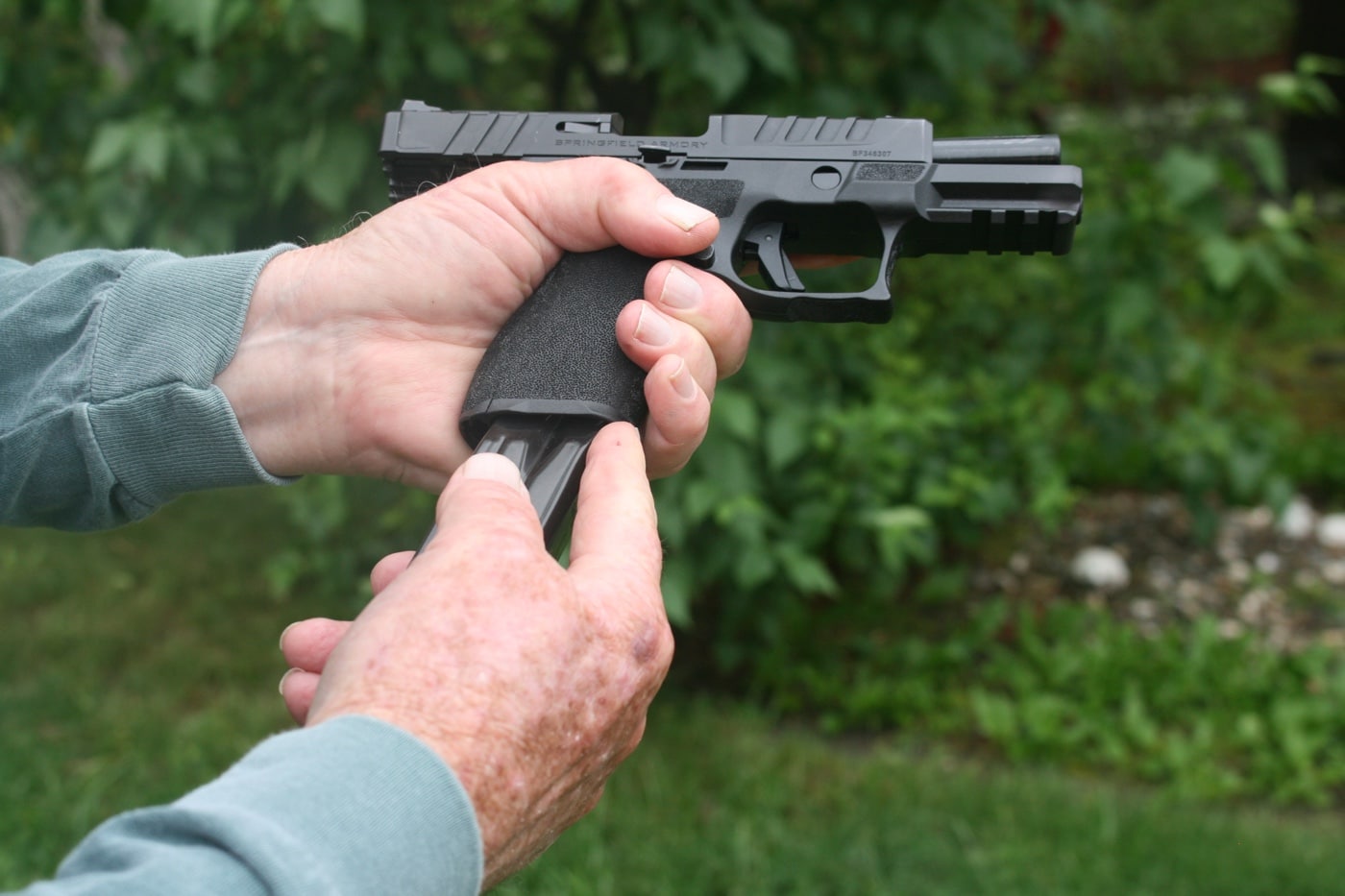
The best place of course, is on the belt as that is the fastest and most efficient location. However, I recognize that the type of clothing worn may preclude this. If belt carry is contra-indicated, there are magazine pouches that are designed for pocket carry. I have had some good luck with pouches that clip to the top of the offside pocket much like a folding knife, keeping the spare magazine very low profile, yet readily accessible
To my thinking, loading a pistol falls into one of two categories. The first is administrative loading, which involves topping off a loaded gun for range practice or carry. The second category is combat loading which implies there is some urgency in getting rounds into your pistol and time is clearly an element. Let’s take a look at some proven techniques that can yield a fast, efficient reload.
Slide Forward or Locked Back?
One of the reasons that autopistols eclipsed revolvers in popularity was the notion that they offered superior “firepower”. Firepower might be defined as the relative capacity of delivering fire on a target. While an A-10 or an Iowa class battleship might be a classic example of firepower, a self-loading pistol falls way short. What a pistol can deliver however, is far better continuity of fire than any revolver, particularly if you are proficient at reloading.
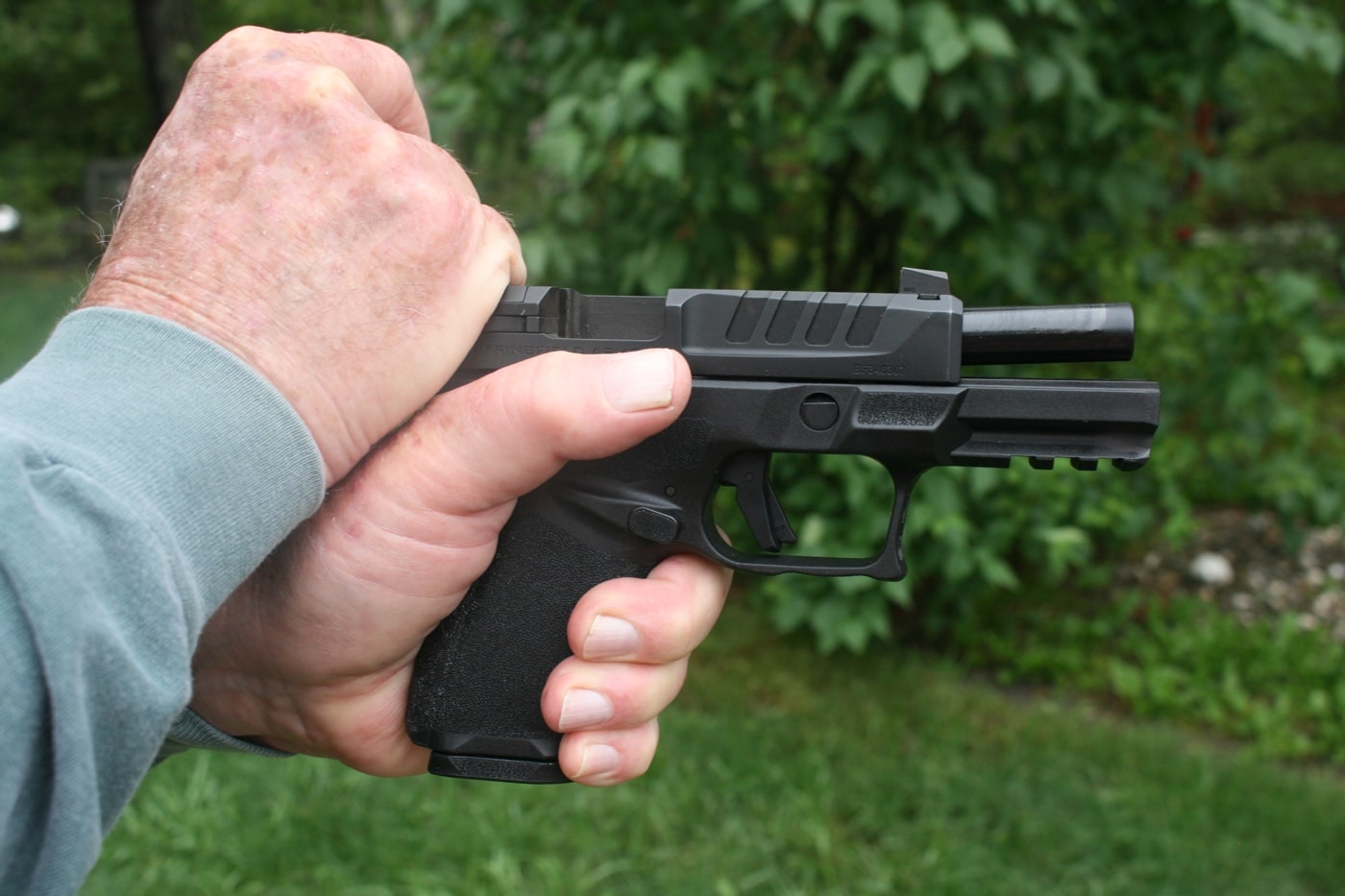
Unlike a revolver, you don’t have to take a pistol totally out of action in order to reload it. If you fire a number of rounds and want to bring a pistol back to full complement, simply drop the partially depleted magazine out, insert a fresh one and you’re back in business. A practiced hand can accomplish this in about two seconds and in some circles, this is referred to as a speed reload. A wise sage once told me “load when you can, not when you have to,” and I have been teaching this concept to my police students for years. When the opportunity presents itself, get more rounds into your pistol.
Should you run your pistol dry, topping off is still far faster than with a revolver. There is indeed an extra step involved, but the empty gun or emergency reload can still be performed very quickly. A practiced hand can keep his/her eyes on the problem and perform either an empty gun or speed reload without looking at the gun — a difficult feat to pull off with a revolver.
Once you have made the decision to reload, bring the pistol in closer to the body while the support hand goes for a fresh magazine. It’s at this critical point in the process that many unschooled shooters lose it and set themselves up for a potential problem. Quite simply, the way you grip the fresh magazine as you remove it from the pouch determines whether your reload will be efficient or a train wreck.
As you come into contact with the magazine, the index finger of the support hand runs down the front of the magazine tube. The magazine floorplate is in the palm of the hand near the base of the thumb as you lift the magazine from the pouch. An all-too-common mistake is just grabbing the magazine by the floorplate and jamming it into the magazine well. That may work on a nice sunny afternoon on the range, but breaks down a hundred different ways under high stress, especially when you can’t see your hand in front of your face.
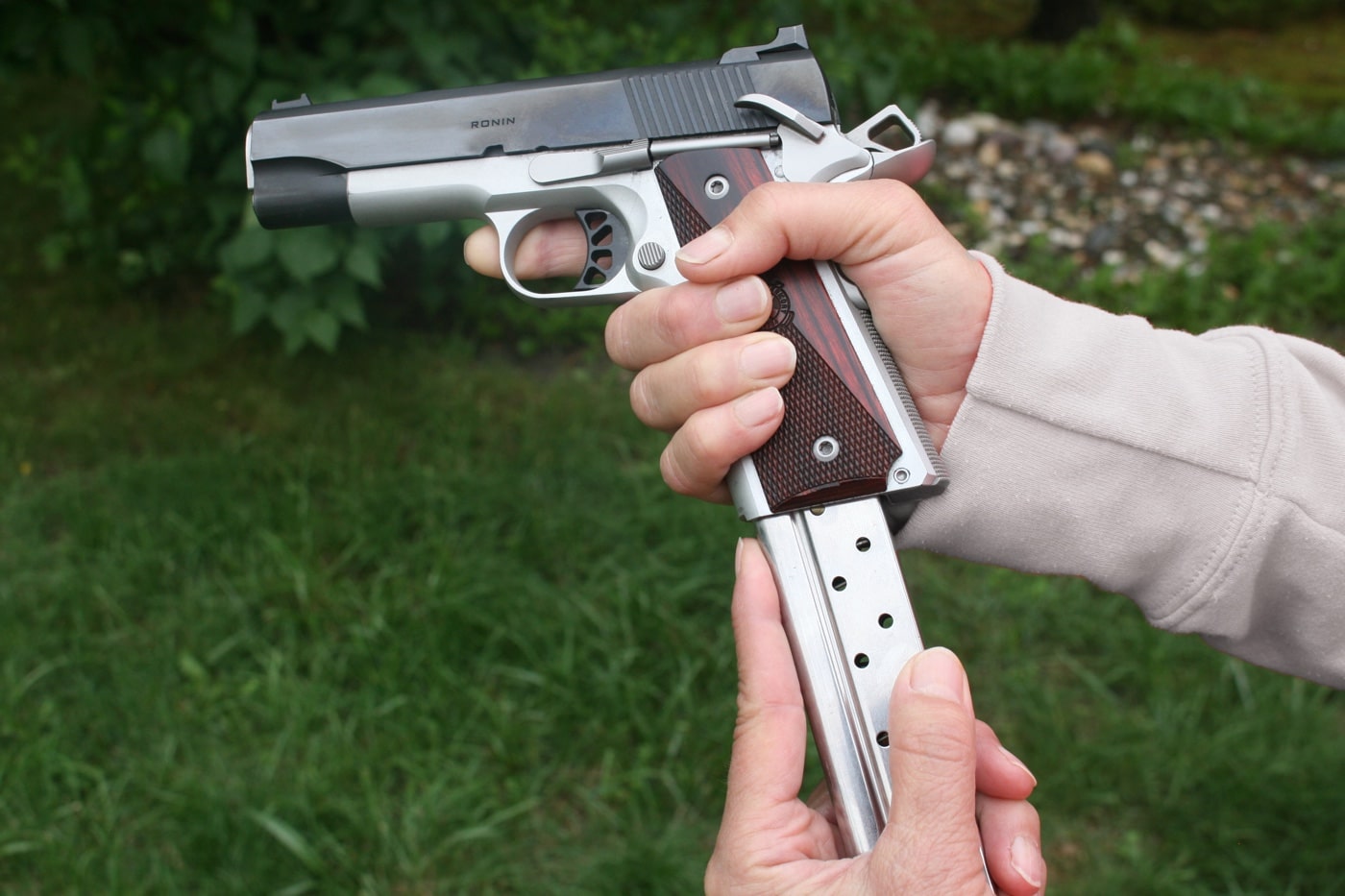
As the support hand goes for the gun, depress the magazine catch to drop the partially depleted or empty magazine on the ground. Having the index finger along the magazine tube will line you up with the magazine well as one hand finds the other. I prefer to align the flat of the magazine tube closest to my face with the magazine well when inserting it into the pistol. The magazine is then firmly seated in one fluid motion. It’s quite alright to take a peek when first trying this out, but after a bit of practice it becomes second nature and you will be able to perform it blind folded. If you are topping off an empty pistol, send the slide forward and you’re back in business.
Much Ado About Nothing
The way we send that slide forward to chamber a round during an empty gun reload has been fiercely debated by firearms instructors for years. I have encountered many individuals who are convinced they have found the one and only true way to recharge your pistol and should you deviate from their path, you will likely fail at the moment of truth. Having tried just about every imaginable way to run the slide, I’m convinced that this is all small potatoes, and you should do it the way you are most comfortable. Hand over the top or pinch the slide? Or, run the slide release? In the modern era, it probably doesn’t matter.

As a southpaw, I came to favor inserting the magazine in my empty pistol, running my hand over to the top of the slide, pulling it to the rear and letting it go to chamber a round. Many of my associates preferred to pinch the slide between the thumb and forefinger to accomplish the same task. It all works! In the not-so-distant past, the slide stop lever would only be found on the left side of the receiver; handy for right-hand shooters, but a non-starter for lefties. That has all changed now and many contemporary pistols such as my Springfield Armory Echelon 4.0C have an ambidextrous slide slide stop lever, opening up a whole new world for me.
Yet another consideration is a pistol with a red dot optic. A technique I was turned onto a few years back was, after inserting my fresh magazine into the pistol, to simply run my hand over the top of the slide and bump the optic to chamber a round. On pistols where I don’t have an ambidextrous slide stop lever, this technique works like a charm.
Tactical Impractical
The classic tactical reload involves saving the partially depleted magazine and inserting a fully loaded magazine in anticipation of future action. In theory, the technique is utilized when there is a lull in a gunfight or when you feel that action has ended.
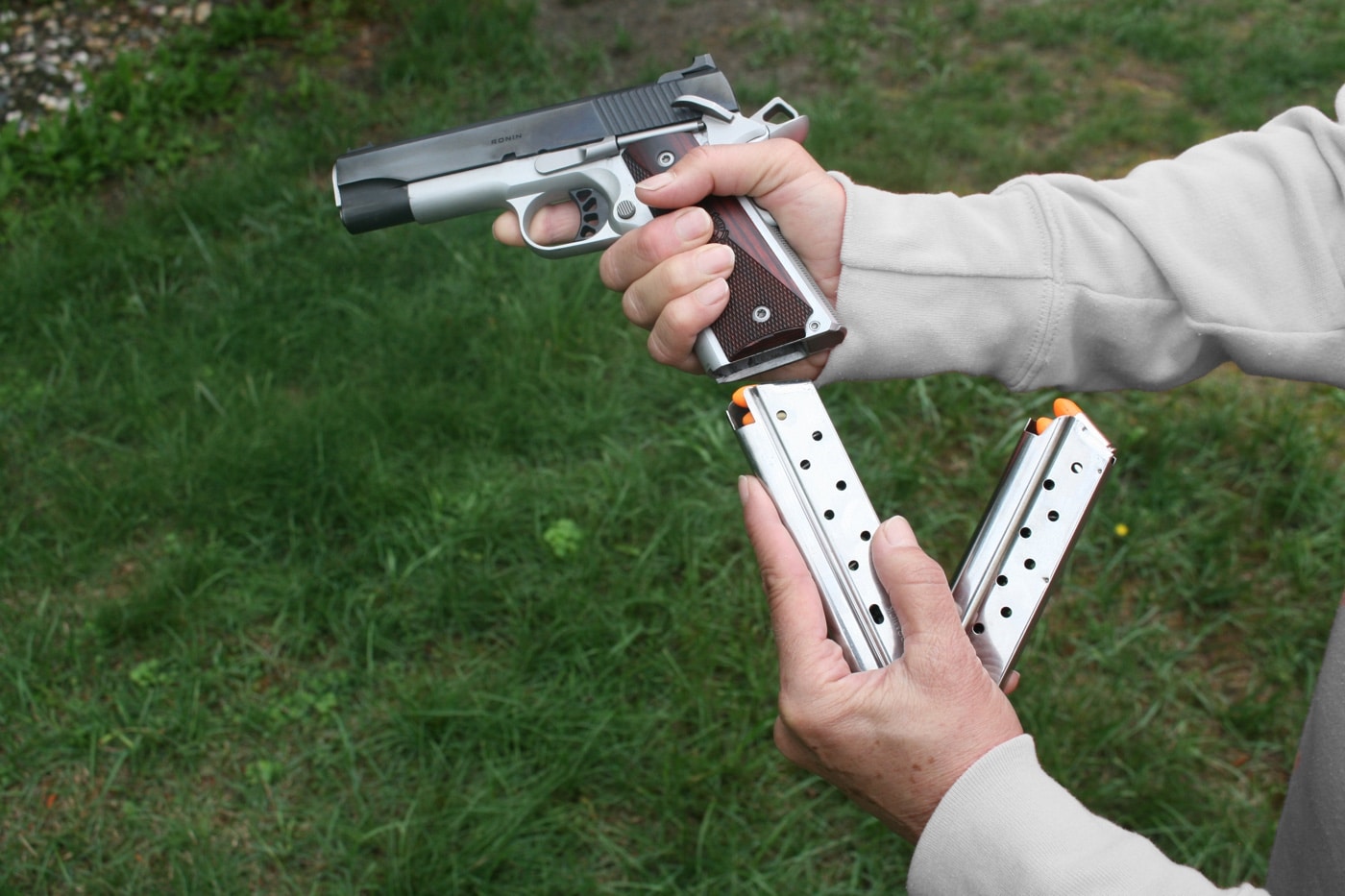
To perform the tactical reload, the shooter first draws a fresh magazine from the pouch and brings it up to just below the pistol’s magazine well. Next depress the magazine release and drop the partially depleted magazine into the support hand. As you take control of the depleted magazine, insert a fully loaded magazine into the pistol and you’re back in business.
When you consider that you have just been involved in the most traumatic event in your life and heart rate and blood pressure read like a zip code along with compromised fine motor control, this is a very difficult feat to pull off. A practiced hand may be able to accomplish this after being subjected to life-threatening stress, but the average shooter who gets out to the range once or twice a year will not be able to pull it off.
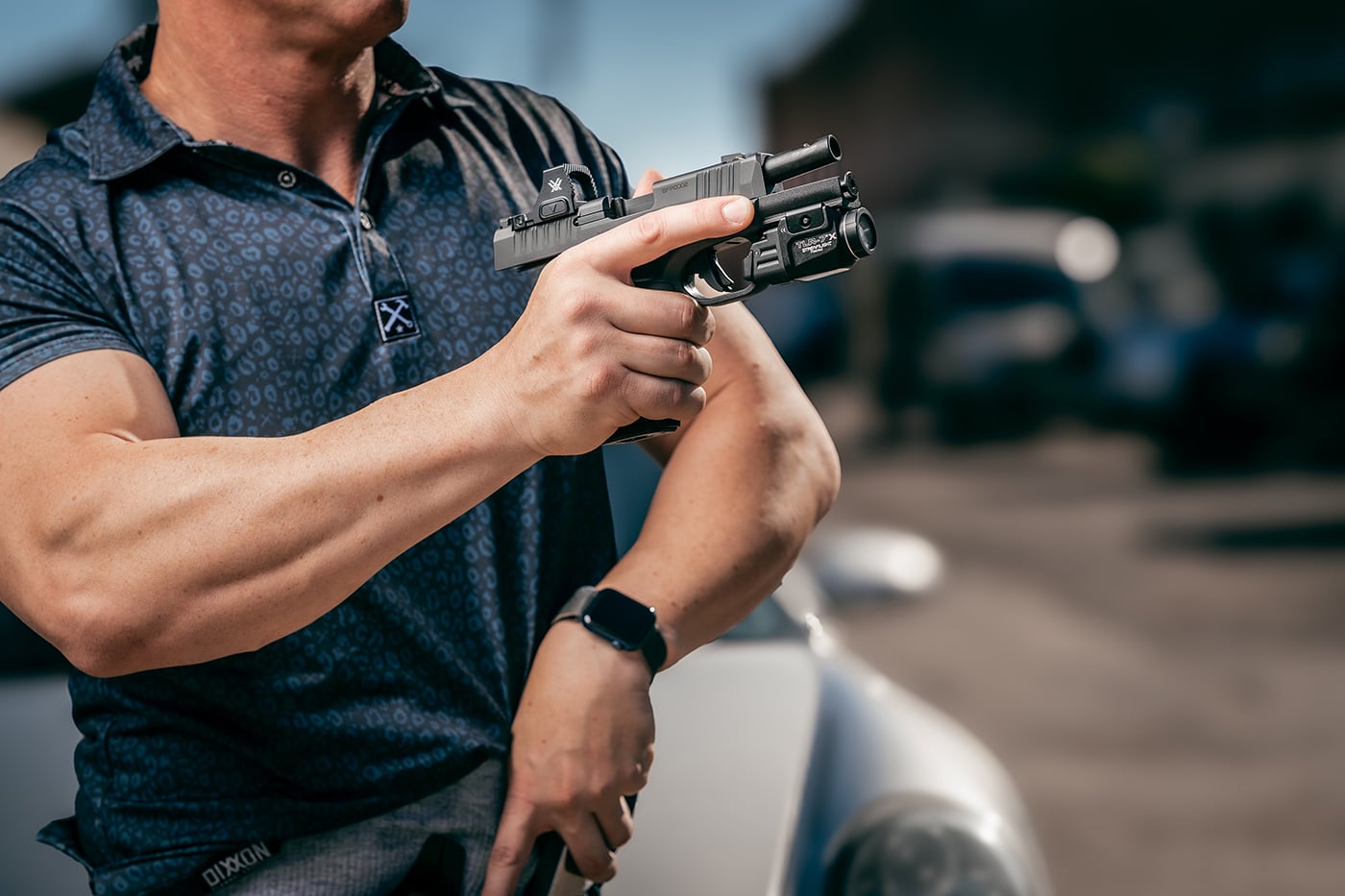
Quite frankly, we never know when it’s really over, and the situation can heat back up in the blink of an eye. When in doubt perform a speed reload and, if possible, move to cover and continue to scan for other threats. Tactical reloads do indeed work great on a range, but I have serious reservations about simultaneously managing two magazines after being exposed to life-threatening stress. Practice time is better spent on speed and empty gun reloads in my opinion.
Practice with a Purpose
Reloading is one skill that can be effectively practiced outside of the range environment. Get yourself some dummy rounds along with a couple of empty magazines and make sure you have no live ammunition on your person or nearby and have a totally empty gun.

For many years, I have favored the inert dummy rounds turned out by ST Action Pro, which feature a bright orange or green plastic bullet and are easy to distinguish from the real thing. A few reps of speed, and empty gun reloads at home will smooth out any kinks. When you do get an opportunity for live fire, your reloads should be far more efficient.
As far as live fire, I load and charge my pistol, remove the magazine and then insert an empty magazine. This essentially turns my pistol into a “one shooter”. Draw, fire a round, and perform an empty gun reload. Start slow by the numbers and edit out any superfluous movement. Is that index finger along the front of the magazine tube? Once you are confident you are performing all the requisite steps correctly, push the gas pedal a little bit. As your movements become more efficient, the speed will come.
Conclusion
Reloading in a gunfight remains an unusual event but we do prepare for every contingency. Ensuring that your gun handling skills are equal to your marksmanship potential gives you the upper hand and helps make you a formidable obstacle when confronted with danger.
Editor’s Note: Please be sure to check out The Armory Life Forum, where you can comment about our daily articles, as well as just talk guns and gear. Click the “Go To Forum Thread” link below to jump in and discuss this article and much more!
Join the Discussion
Featured in this article
Read the full article here



